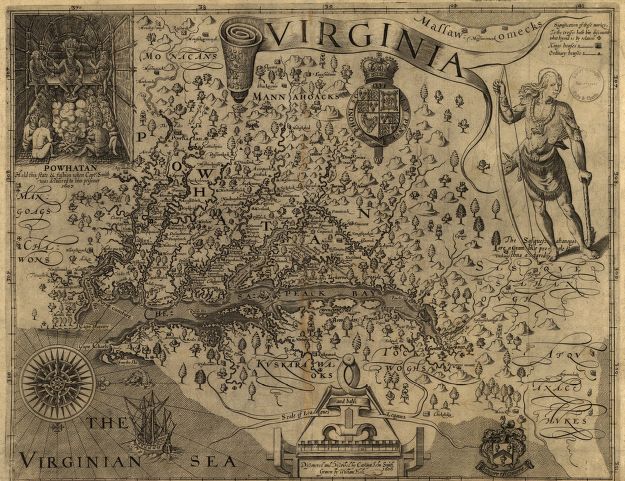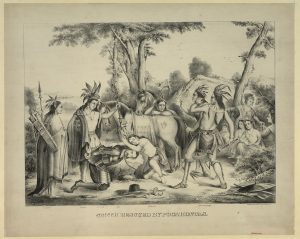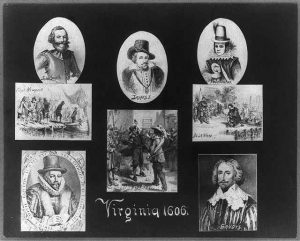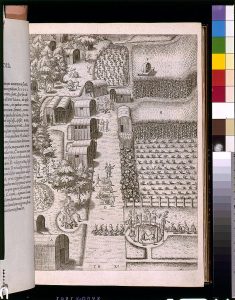What happens when cultures meet?
Subject(s): Native Americans and US History
Time Period(s): (1585-1783) Colonization and Settlement
Grade level(s): 3-5
Click here to download the powerpoint
Blood on the River, an historical novel by Elisa Carbone, tells the story of Samuel Collier, a fictional character who is the page of Captain John Smith. This primary source set provides context for the meeting between the English and the Algonquin in the earliest days of colonial America.
Supporting question(s):
What are the effects of settlement on the settlers and the native people?
What determines success/failure of a settlement?
How do the different perspectives of those involved compare/contrast?
Source Set
- Virginia
- Smith rescued by Pocahontas
- Portrait of Pocahontas, from painting by Wm. Sheppard
- Virginia 1606
- Village of Secotan
Description
Print created between between 1870 and 1875 showing Pocahontas leaning over Captain John Smith
Description
Photograph of a painting in the United States Capitol, copied from original by William Sheppard, dated 1616, at Barton rectory, Norfolk, England.
Description
Composite plate of reproductions of engravings featuring: John Smith, James I, Pocahontas, Capt. Newport, Bacon and Berkeley, Delaware, and Sandys.
Description
Image of an Algonquian village on a river estuary showing Native structures, agriculture, and spiritual life
Additional resource(s):
Primary sources/ book backdrops
Cross Cultural Colonial Conflicts
Blood on the River: Jamestown, 1607
Arkansas Framework(s):
H.12.5.4 Evaluate short- and long-term effects of European exploration and settlement in the Americas and Arkansas from multiple perspectives (e.g., Roanoke, Jamestown, disease, conflict)
H.12.5.7 Research the development of the colonies by generating compelling and supporting questions to guide inquiry (e.g., Why did people settle where they did? How did they solve problems? Was life better in the colonies than in England? Was life better in some colonies than others? How were patterns of settlement influenced by beliefs, economics, and geography?)10.5.3 Examine reasons for population shifts in early America and the effects on various regions
G.10.5.3 Examine reasons for population shifts in early America and the effects on various regions





